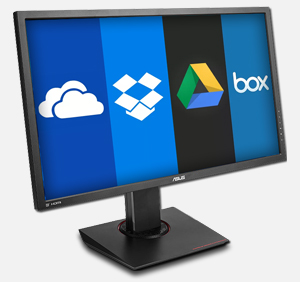|
Amidst growing concerns over the spread of coronavirus in the workplace, many large companies are opting to allow employees to work from home. AVAproject, with its distributed architecture, makes the transition from office to home seamless.
Working from home or "telecommuting" as it's often called, has become increasing popular of late. Initially driven by the drastically increasing costs of office space in certain areas, it has seen sharp increase in popularity amidst fears of the recent coronavirus outbreak. Many large companies such as Microsoft, Apple and Amazon have already begun encouraging employees to work from home when possible.
The notion of working from home or a mobile office is certainly nothing new in the architectural industry. Manufacturer sales reps and project managers routinely work from remote locations such as job sites and home offices. While it is considered common practice in the industry, many software platforms do no lend themselves as well to this type of mobile existence as one would think.
There is no escaping the fact that cloud-based computing is the single fastest growing trend in the technology section, and nowhere is this more prevalent that in large organizations with numerous employees scattered amongst multiple locations. The appeal of cloud-based or "centralized" application deployment is obvious. The ability to manage applications and large groups of users from a central location certainly looks great on paper, but does the reality live up to the promise?
Before one can answer that question, it's important to consider to various ways in which cloud-based servers can be implemented. The term "cloud-based" itself refers primarily to a single component in an overall deployment architecture; namely a central server that can be used to house data, applications or both.
Central Data Storage
The primary, and arguably most important use of cloud-based servers is to centralize repositories of data so that it can be accessible throughout an organization. This type of storage can take many forms. Corporate users tend to favor "SQL type" servers that can reside in either a central office location or a hosted cloud provider such as Amazon AWS or Microsoft Azure. They are a familiar storage solution with decades of history in commercial environments.
At the other end of the cost and complexity scale are remote file servers that allow users to store any type of file, from Word and Excel spreadsheets to, of course, project files. These solutions can also be hosted on an office server or can just as easily take the form of a shared Google Drive or Microsoft OneDrive account.
In either case, remotely stored user data is both accessible and more easily backed-up, ensuring long term data integrity. Naturally, having data remotely accessible does raise some valid security concerns. Data breaches are an increasingly common fact of cloud-computing solutions, and one that companies need to take very seriously. | 
|
Virtual Application Hosting
As the name implies, "virtual application hosting" involves storing not a user's data but their applications and entire operating system (ie: Windows) on a cloud server. Instead of installing applications on individual users' machines, applications are installed in a "virtual" copy of the Windows operating system that resides on a centralized server.
There are number of software platforms that support this functionality including Microsoft RDS, VMware, Citrix, etc. They have become extremely popular with the I.T. crowd because they make deployment and maintenance of applications far more convenient, by eliminating the need to deal with all those individual computers. This type of centralization places a much greater set of demands on both the servers and the connections to the individual users. Essentially, each user is running their applications from the same server (or server group).

| It should be clearly understood that both of these aspects of cloud deployment, data storage and application hosting, can be implemented together or separately as the needs of the organization require. Both have clear benefits, but also come with some very important caveats. The first, and most readily apparent being that of internet connectivity. In a hosted environment for example, users are require to maintain a constant internet connection with the host server. This connection, commonly referred to as a "VPN" ("Virtual Private Network"), will have a massive impact on the overall user experience. Having multiple users running their applications on a common server necessarily means that individual performance will suffer with increased software use throughout the organization. |
The quality of the internet connection itself will also affect the performance of software running on remote servers. Internet quality is a bit of a mixed bag in this day and age. While many offices have high-speed fiber connections, this is still very rare in terms of the overall population of North America. Residents in large urban areas will often enjoy similar high-speed connectivity, those in more rural locations will commonly be limited to copper wire (ie: "DSL") service. There are still many areas in which even these comparably low-quality connections are unavailable or strictly limited, making constant VPN connections untenable.
The Happy Medium
While AVAware software products fully support all these environments, client organizations are generally encouraged to consider a more distributed architecture when dealing with numerous remote or home based users.
A "distributed architecture" simply means distributing the burden of application and data storage amongst multiple locations. In this case, AVAware suggests installing applications directly on the users' individual computers as one would with any commonly used software. While that certainly does not prevent those users from making use of a shared central data repository, it does allow for uninterrupted software use even with poor or non-existent internet connections.

Remote users often enjoy the convenience of being able to take their laptops to remote job sites or work on airplanes where internet connections are unreliable or just extremely expensive. In these situations, they are able to connect with their central servers when it is convenient to synchronize their data and receive updates. This approach offers users the best of both worlds and allows them to enjoy the benefits of centralized data storage without the limitations imposed by tethering them to constant VPN connection.
When choosing a deployment strategy, the needs of the organization as a whole are clearly paramount. With that in mind, administrators should consider all the implications of the choices they make. Convenience and ease of management are important to be sure, but so is the overall user experience. Compromising software performance for users can only result in diminished performance on their part. There is a reason the Microsoft - the creators of the virtual desktop environment, have opted to deploy their Office 365 application though a distributed installation model. The same deployment strategy recommended by most leading software vendors including Apple, Adobe, and of course AVAware.
With all that being said, AVAware does fully support centralized deployment utilizing privately hosted or cloud-based virtualization servers. For many organizations, particularly those that do not have a large number of remotely located users, this can be an effective choice. For additional information on the virtual deployment of AVAware software products, please contact AVAware customer service.
|